Nicaragua
A Nicaraguan Fable
Once upon a time there was a great forest, green and lush, rich in fruit trees and teeming with life. The forest was ruled by an cunning old lion. Well actually, the real power lay with a herd of elephants living in the nearby savannah, but the lion had all the forest dwellers collecting fruit for the elephants, so they were quite happy with his rule. The remaining fruit that the elephants didn’t want was given over to the lion’s relatives and courtiers.
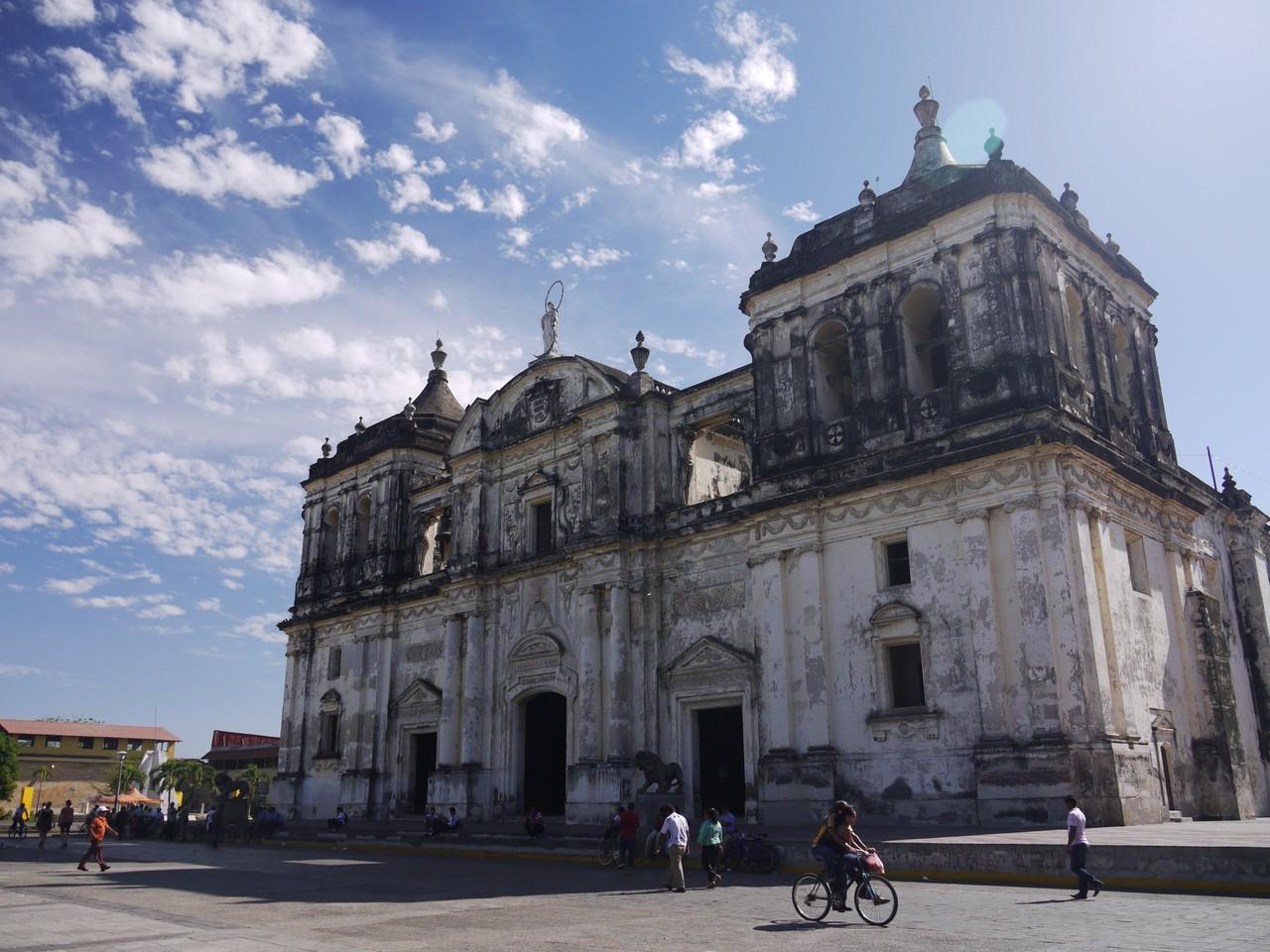 Cathedral in Leon
Cathedral in Leon
So the elephants were happy and the lions were happy, but elsewhere in the forest there were grumblings aplenty. The animals figured that since they were the ones collecting the fruit, they should be the ones to eat them too. Finally a pack of young tigers rose up to challenge the lion and his cronies. A great war ensued, and in the end the lion was driven from the forest and banished to a barren desert.
The tigers rejoiced, but the troubles of the forest were far from over. The elephants, furious at the betrayal and concerned that the tigers’ rebellion might spread to the savannah, recruited the remaining lions and other forest dwellers who disliked the tigers, and set them about wreaking havoc in the land. They burned down trees, raided the tiger dens, barred forest paths with rocks and debris, and caused all sorts of mischief and mayhem. The tigers responded with increasing aggression, causing further damage to the forest and punishing anyone they considered too friendly with the lions and elephants.
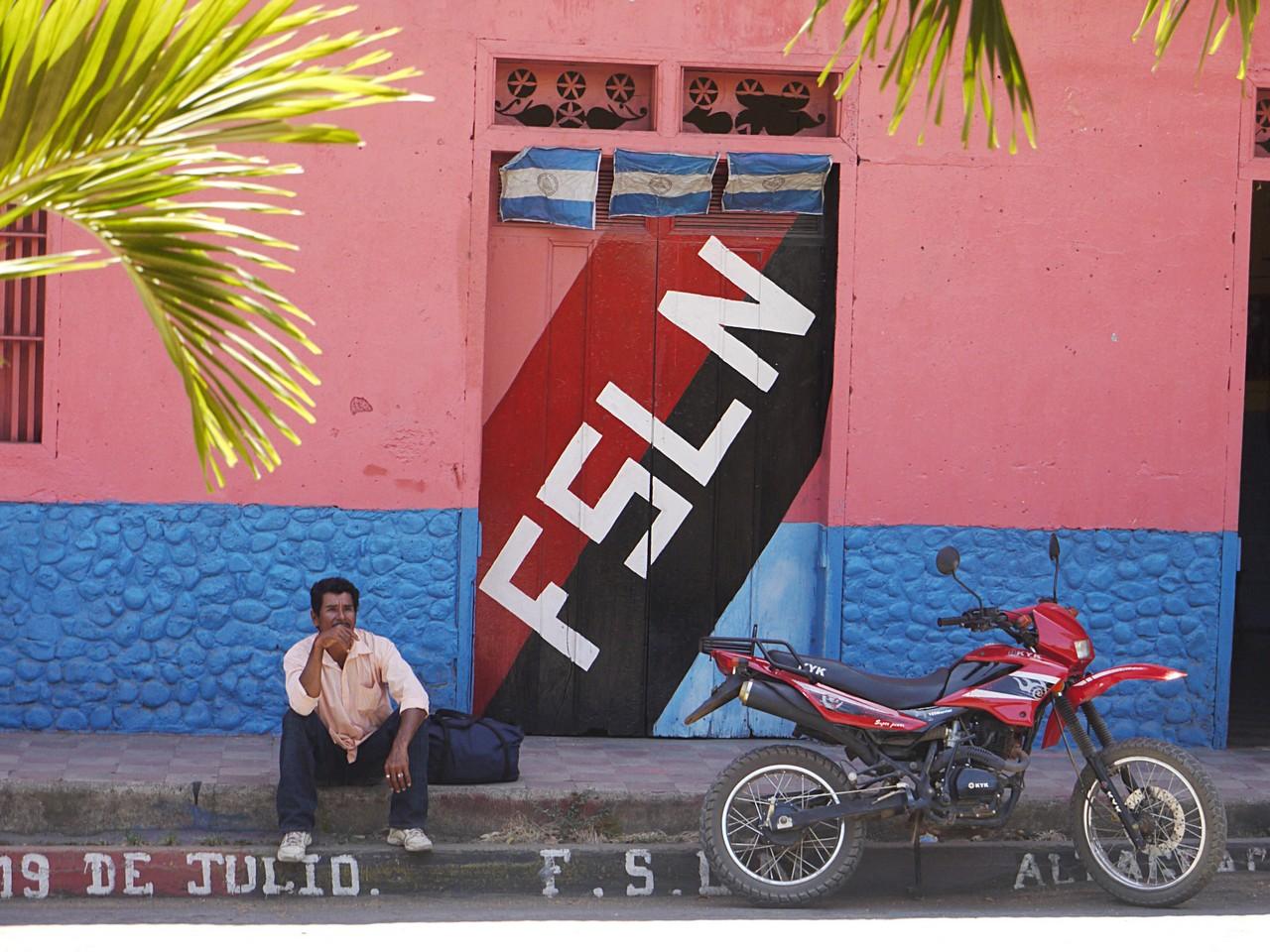 Sandinista banner, Isla de Ometepe
Sandinista banner, Isla de Ometepe
The vicious cycle continued for quite some time. The residents of the forest grew tired of the disturbance, and eventually so did the elephants. A meeting of the herd was called, and it was decided that harassment of the tigers must stop. But some elephant elders were determined to drive the tigers out, continuing to plot attacks and disruptions in the forest unbeknownst to their brethren. When this was discovered, there was a huge outcry throughout the land, and the elders were forced to quit their involvement. A handful of them were banished to the desert.
These days, the forest is free to manage its own affairs, but years of animosity have taken their toll. The once lush landscape is decimated, and the animals find it difficult to cooperate, spending much of their time blaming each other for the sorry state of affairs. At least there is peace though, and the old wounds are beginning to heal. Even the elephants have begun venturing back into the forest, hoping to fix some of the damage they helped cause, and perhaps bring home a few baskets of delicious fruit.
(Note: the above version of Nicaraguan history during the Cold War is oversimplified and unfair to all parties involved. Read up on the real thing - it’s a great story with important lessons)
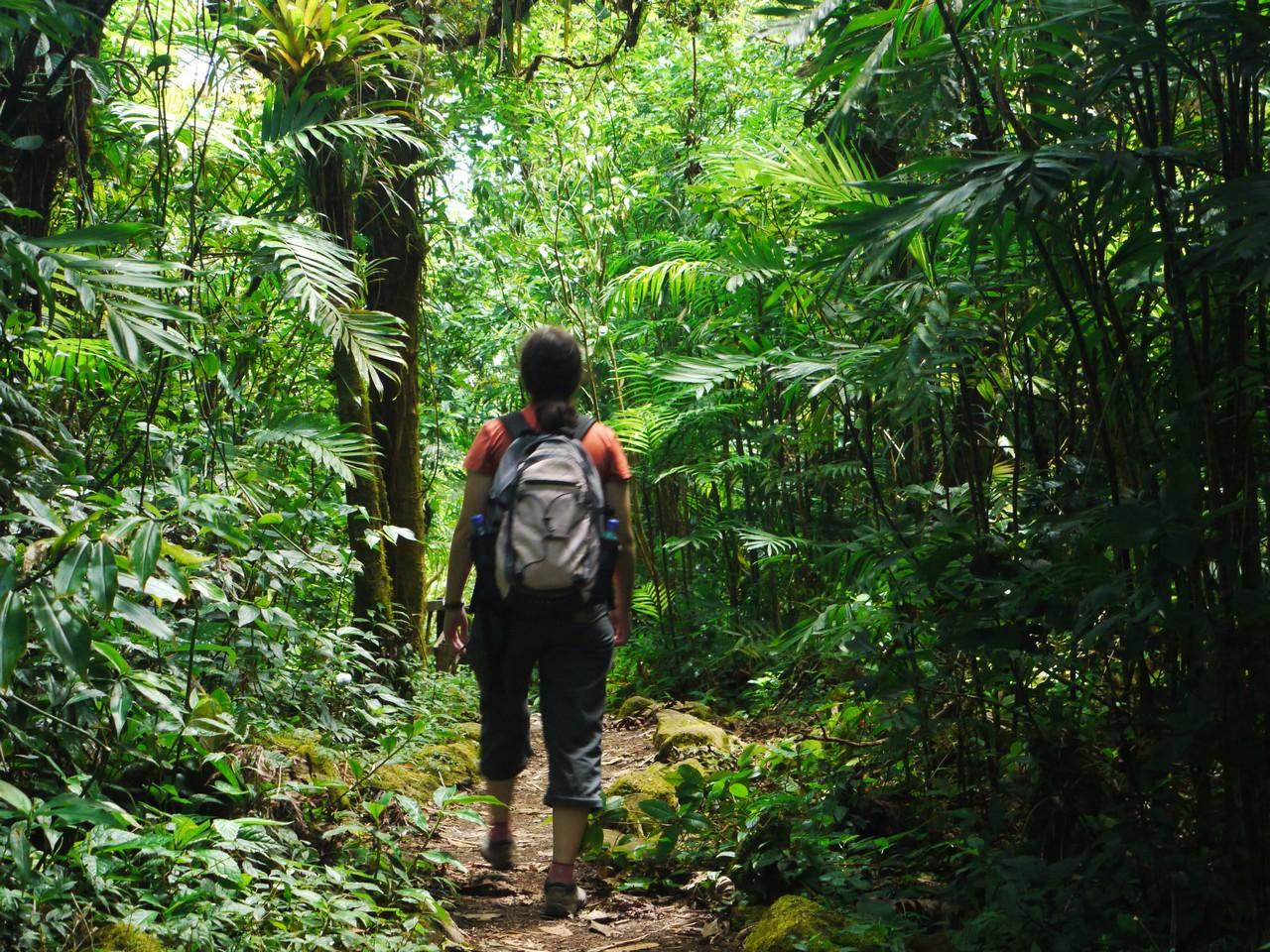 Cloud forest, volcan Mombacho
Cloud forest, volcan Mombacho
Currency Rundown
Seven countries in Central America, plus Mexico, makes for plenty of numismatic joy.
Mexico
Currency: Peso. Means “weight” in Spanish.
Symbol: “$”
Yup, same symbol for peso as for dollar, which can be confusing. Some people reportedly take advantage of the confusion to (drastically) overcharge unobservant tourists.
Rough conversion to USD: divide by 100, multiply by 7.
Guatemala
Currency: Quetzal. Named after a much beloved, rarely seen bird.
Symbol: “Q”
Rough conversion to USD : divide by 8.
Belize
Currency: Belize dollar, though U.S. dollars are accepted everywhere.
Symbol: “$” or “BZ” or “BZD”. Usually pronounced “Belize” in conversation.
Conversion to USD: pegged to the U.S. dollar at 2 BZD = 1 USD. An endless source of confusion when prices are quoted. U.S. bills are everywhere, and the locals are very adept at mixed-currency calculations.
Honduras
Currency: Lempira. Named after the indigenous war hero who was ultimately captured and killed by the Spanish.
Symbol: “L”
Rough conversion to USD: divide by 20.
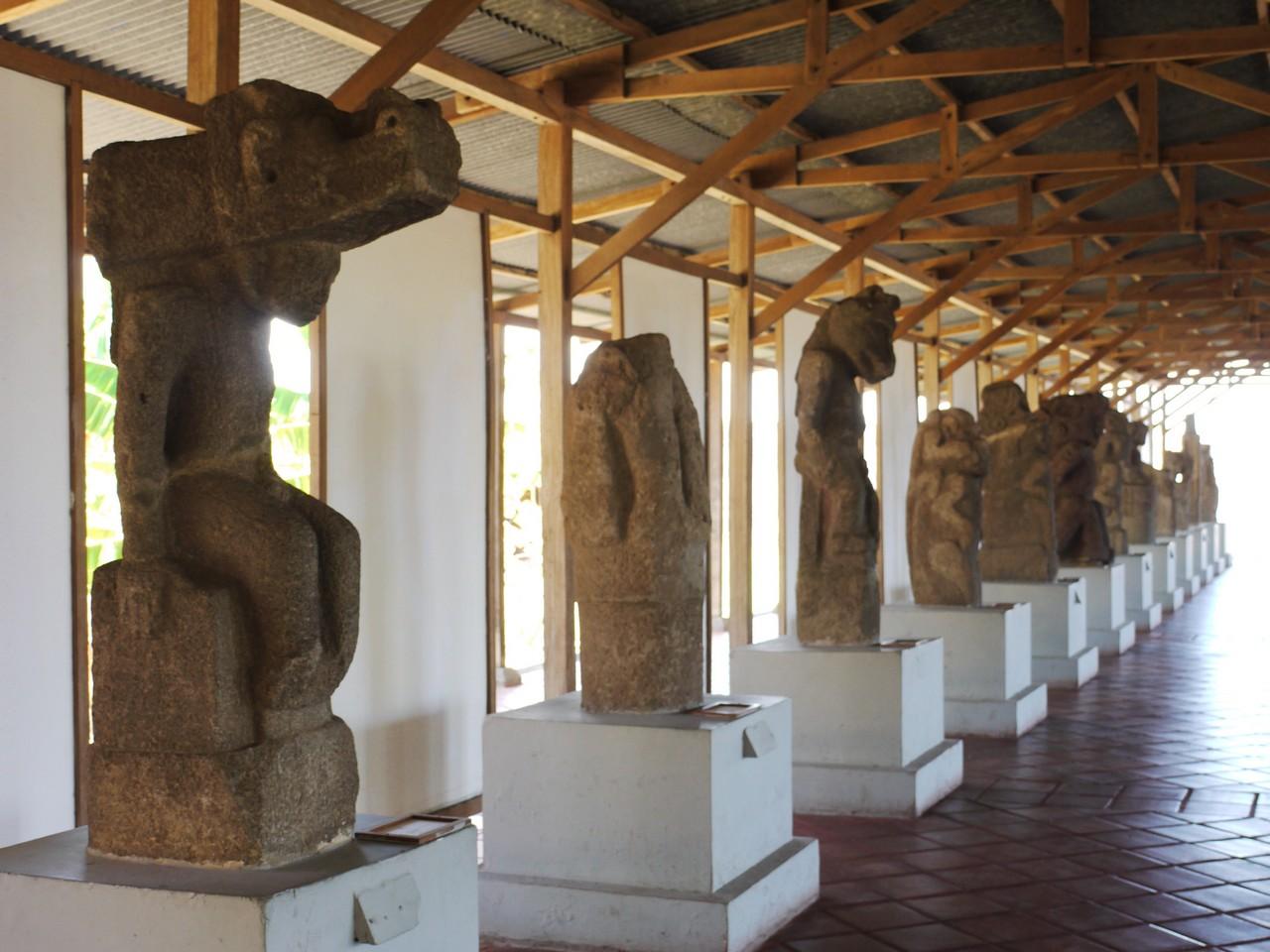 Precolumbian sculptures, Granada
Precolumbian sculptures, Granada
Nicaragua
Currency: Cordoba. Named after the Spanish conquistador and founder of the nation. U.S. dollars are also legal tender, i.e. dollars are accepted everywhere in the country. The dual currency coupled with an unintuitive, fluctuating exchange rate means that calculators are a big industry in Nicaragua.
Symbol: “C$” or “C” or a symbol produced by writing “C” and “$” on top of one another.
Rough conversion to USD: divide by 25.
Costa Rica
Currency: Colon (Spanish rendition of “Columbus”)
Symbol: “₡”
Rough conversion to USD: divide by 500. All prices are three digits and up - a real problem when your Spanish language numeracy is limited to two digits.
El Salvador
Currency: The Salvadorean currency (also named Colon) was phased out in 2001. U.S. dollars are used exclusively.
Panama
Currency: Balboa. Named after another Spanish conquistador.
Symbol: “B” or “B/”
Conversion to USD: pegged to the U.S. dollar at 1 Balboa = 1 USD. There are no Balboa bills, and U.S. bills are used exclusively. There are Balboa coins however.
Fun fact: Nicaragua and Honduras both claim the title of “second-poorest nation in the western hemisphere”. For the moment Nicaragua is winning, but it’s a close call. The number one spot isn’t contested - Haiti won’t be losing that distinction anytime soon.
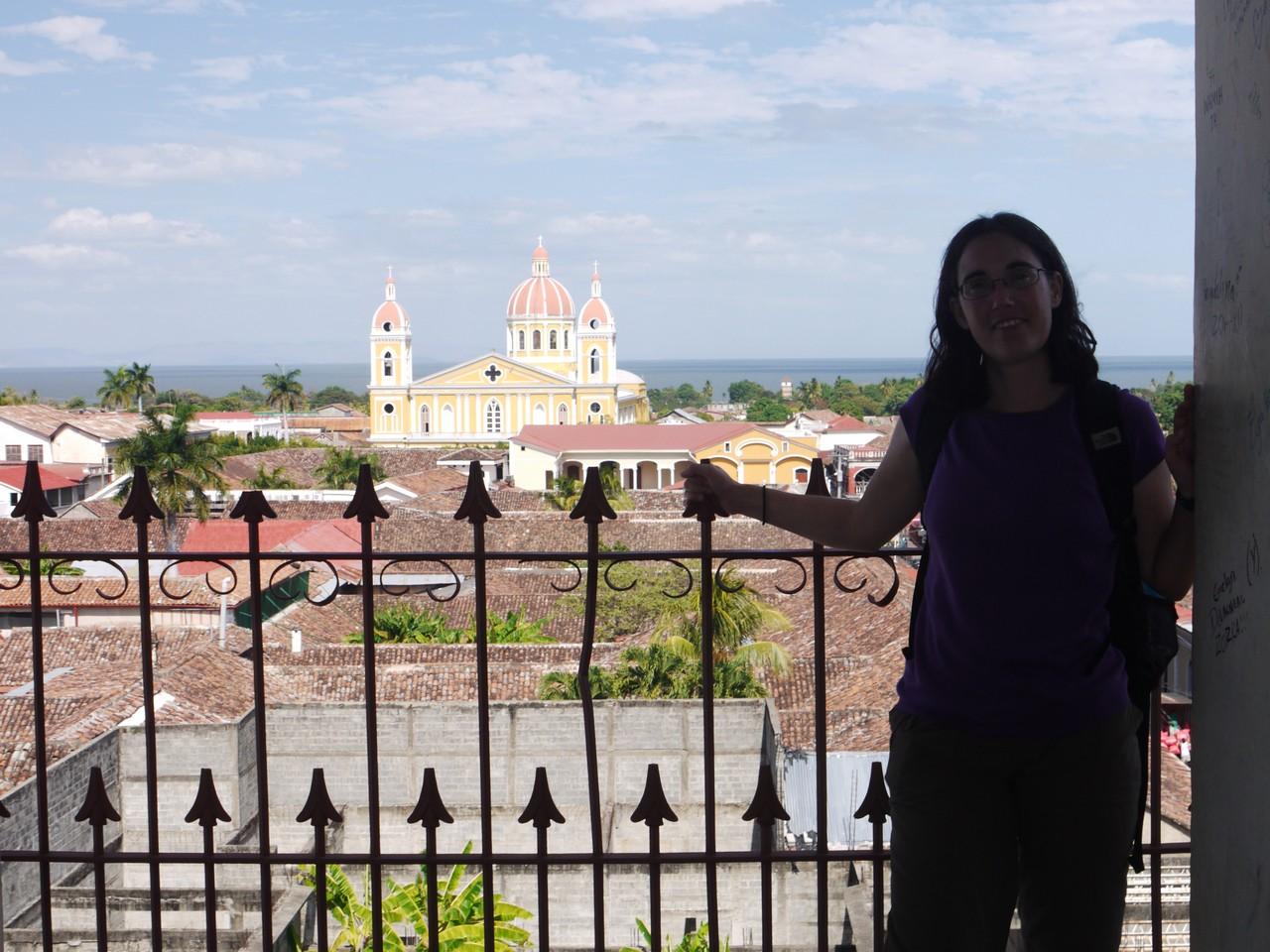 Granada and Lago de Nicaragua, from La Merced
Granada and Lago de Nicaragua, from La Merced
Here Come the Gringos, Yet Again
In 1524 the Spanish founded Granada on the shore of Lago de Nicaragua, and for the past 500 years they’ve been fighting off one English-speaking invasion after another. Something about Granada seems to attract gringo adventurers and bandits like a magnet.
In 1665 the pirate Henry Morgan sailed into the city with six canoes, emptied the treasury and set fire to the buildings. William Dampier arrived overland in 1685 and burned the place to the ground. British Caribbean forces tried and failed to take the city in 1762 and again in 1780.
 Cathedral in Granada
Cathedral in Granada
The most famous incident is William Walker’s 1855 filibustering campaign. Walker, an American, was called in by the rulers of Leon to help fight their rivals in Granada. He sailed into Granada and took it handily, then proceeded to take Leon too and declare himself president of Nicaragua. The following year he tried to expand his rule into Costa Rica, but the governments of Central America had had enough, and a combined force was dispatched to drive him out. Walker’s last act before retreating from his seat of power in Granada was (surprise, surprise) to burn the city to the ground.
The latest gringo invaders in Granada are not as inclined to light fires, unless it’s at the ends of their cigarettes. There’s a higher ratio of whites-to-latinos in central Granada these days than in many parts of the United States. Most are just passing through, but a significant number are there to stay. They’re starting businesses, or consulting, or volunteering, or retiring, or escaping whatever needs escaping.
Old Indians and Iguanas
We took a cooking class in Leon, learning to prepare Indio Viejo (old indian). The name allegedly originates from the time of Spanish conquest, when the soldiers of Spain would see the indigenous people cooking a feast and invite themselves to join in. The villagers, looking to get rid of the unwanted guests, would explain that grandpa had recently passed away, and today the “old indian” is to be served for dinner. That was enough to convince the Spaniards to seek nourishment elsewhere.
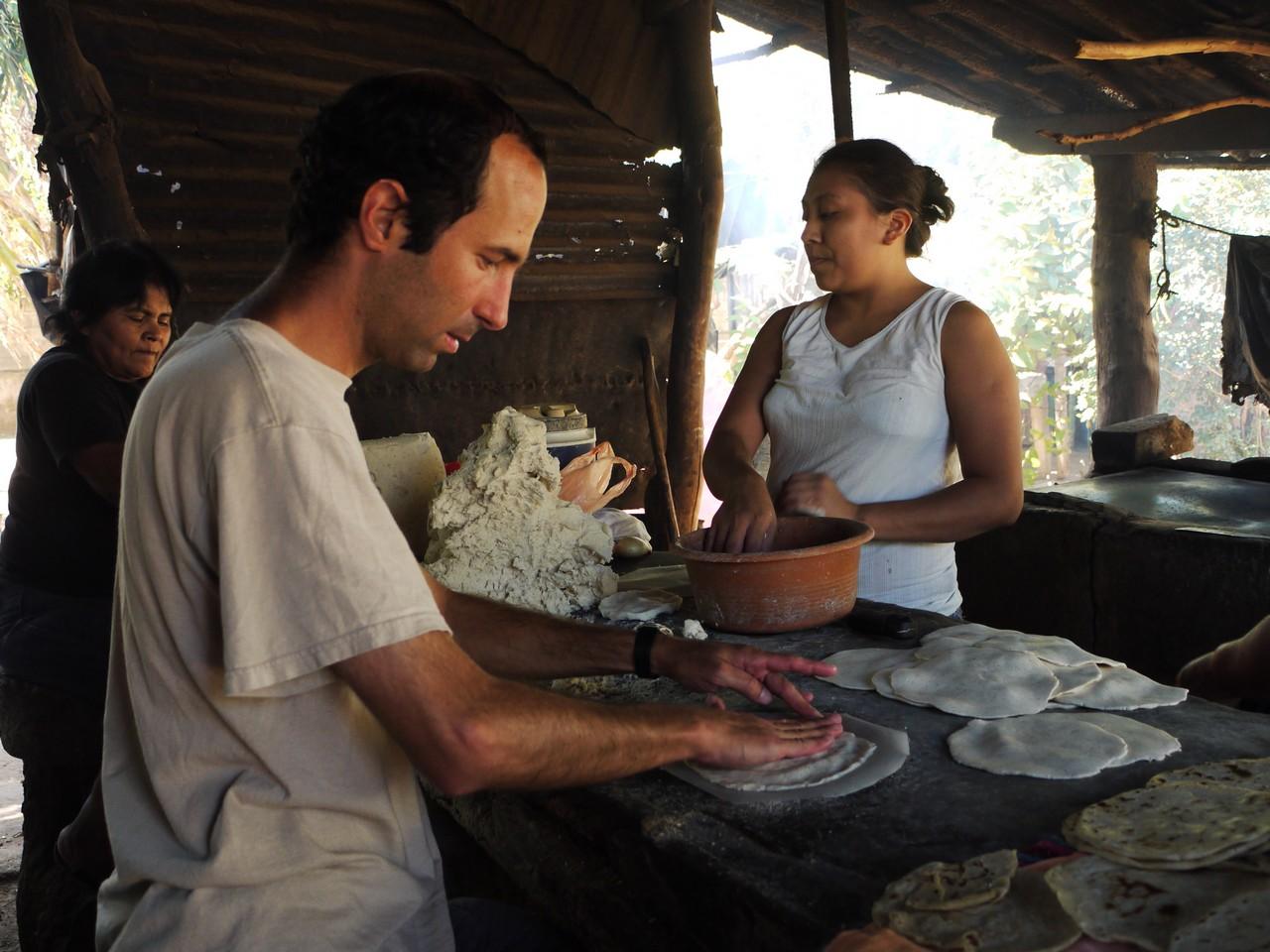 Making tortillas in Sutiava, Leon
Making tortillas in Sutiava, Leon
A curious sort of stew, Indio Viejo involves boiling beef then whacking it to pieces with a large rock, browsing the garden for pea-sized chillies, dissolving plenty of masa (corn dough) in hot water, and adding plantains, tomatoes, onions and spices. The result is tasty, but it lodges itself in the stomach like a concrete slab. The element of the recipe that we’ll take home is the blend of spices - a combination of sour oranges, mint and achiote (similar to paprika). It’s unique and delicious, and should work well in other dishes too.
The other option on the menu for the day was a dish of iguana. It involves buying a live iguana in the market, butchering it at home and cooking the pieces. It would be interesting to try iguana sometime, but we’d rather have someone else do the processing. It was fun to play with the live iguanas in the market though. Iguanas are used for food throughout Central America, and some species have been hunted to the point where they are now endangered, but the ones sold in the markets are commercially farmed.
 Iguanas for sale at the market in Leon
Iguanas for sale at the market in Leon
Getting Wet
Of the seven hostels and hotels we stayed at in Nicaragua, not one was equipped with hot running water. This wasn’t much of a problem in April - everywhere we went was hot and sticky, and the lukewarm water coming out of the shower was just what we needed. But it would have been a bummer in December. Even in this part of the world, an occasional hot shower isn’t too much to ask for. Before Nicaragua, we had hot water almost everywhere.
But while Nicaragua is lacking in the shower department, it makes up for it with plenty of good swimming.
Laguna de Apoyo
 Laguna de Apoyo
Laguna de Apoyo
What: a good-sized lake in an ancient volcanic crater.
Beach: mostly rocks and bush, planted grass in some areas.
Water: kept warm by submerged thermal vents. Soooo nice.
Views: blue above, blue below, a strip of green (the crater lip) in-between.
Access: 30 minute drive from Granada. Daily shuttles from hostels in the city.
Amenities: at Monkey Hut, $6 buys lounge chairs, shade, washrooms, inner tubes, kayaks, floating platforms and picnic tables. Drinks and pizza are extra.
Complejo Turistico, Granada
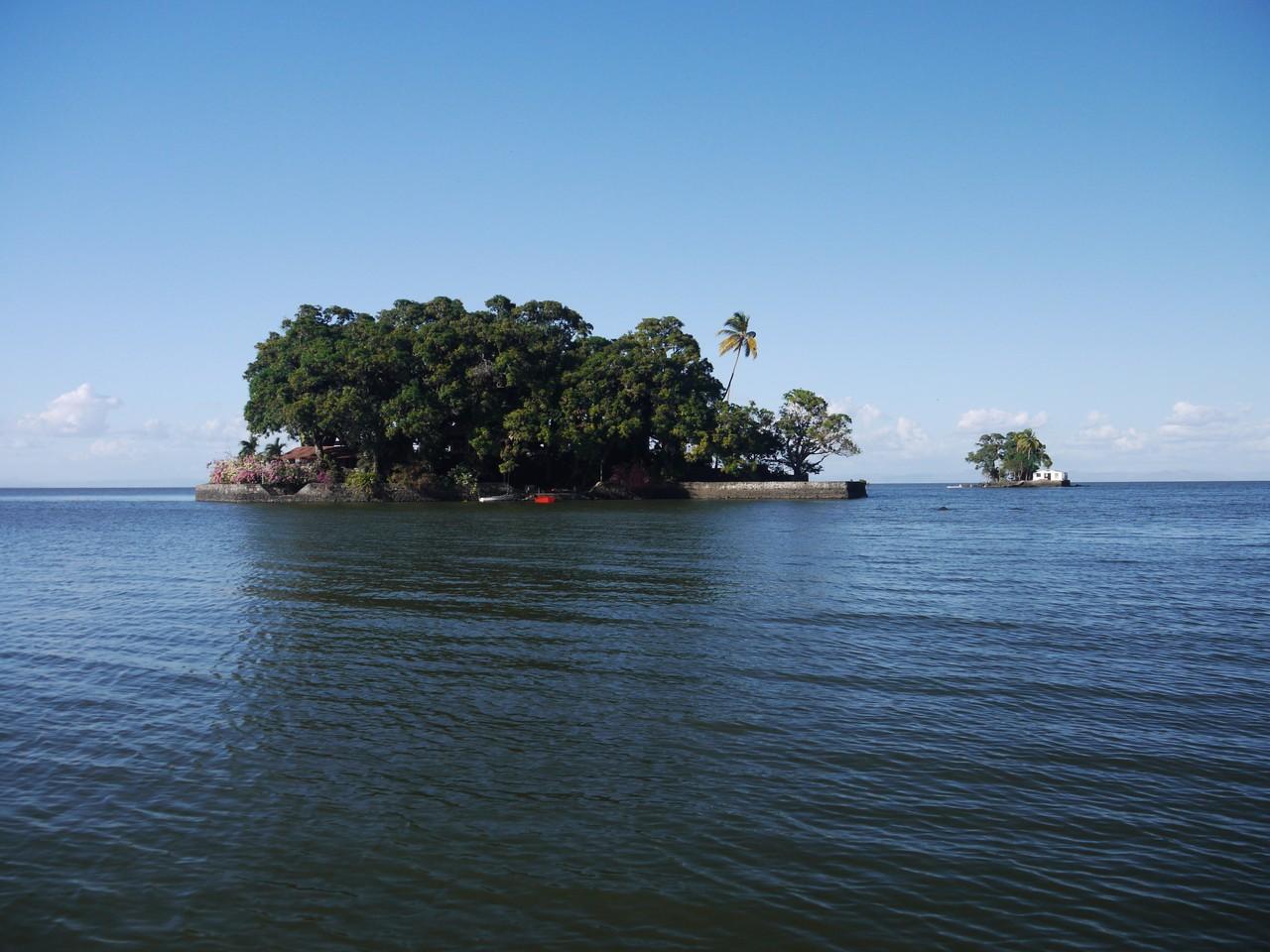 Isletas de Granada
Isletas de Granada
What: Granada’s “if you build it, they will come” lakefront development.
Beach: nice black sand with bits of garbage poking through here and there.
Water: can be choppy, which is fun. Probably not very clean, but doesn’t seem to be toxic.
Views: good view of the lake and volcan Mombacho in the background.
Access: cheap taxi or a quick stroll from the town centre.
Amenities: all the fried fish and overpriced beer you can consume.
P and B’s indoor-outdoor pool, Granada
What: we invited ourselves to stay over with friends in central Granada. Their little courtyard pool is perfect for an afternoon dip.
Beach: upstairs balcony for drying out afterwards.
Water: nice and warm.
Views: cute little tropical garden with glimpses of the kitchen beyond.
Access: must have the right connections :-)
Amenities: hammocks, hot showers, yoga classes.
Playa Santo Domingo, Isla de Ometepe
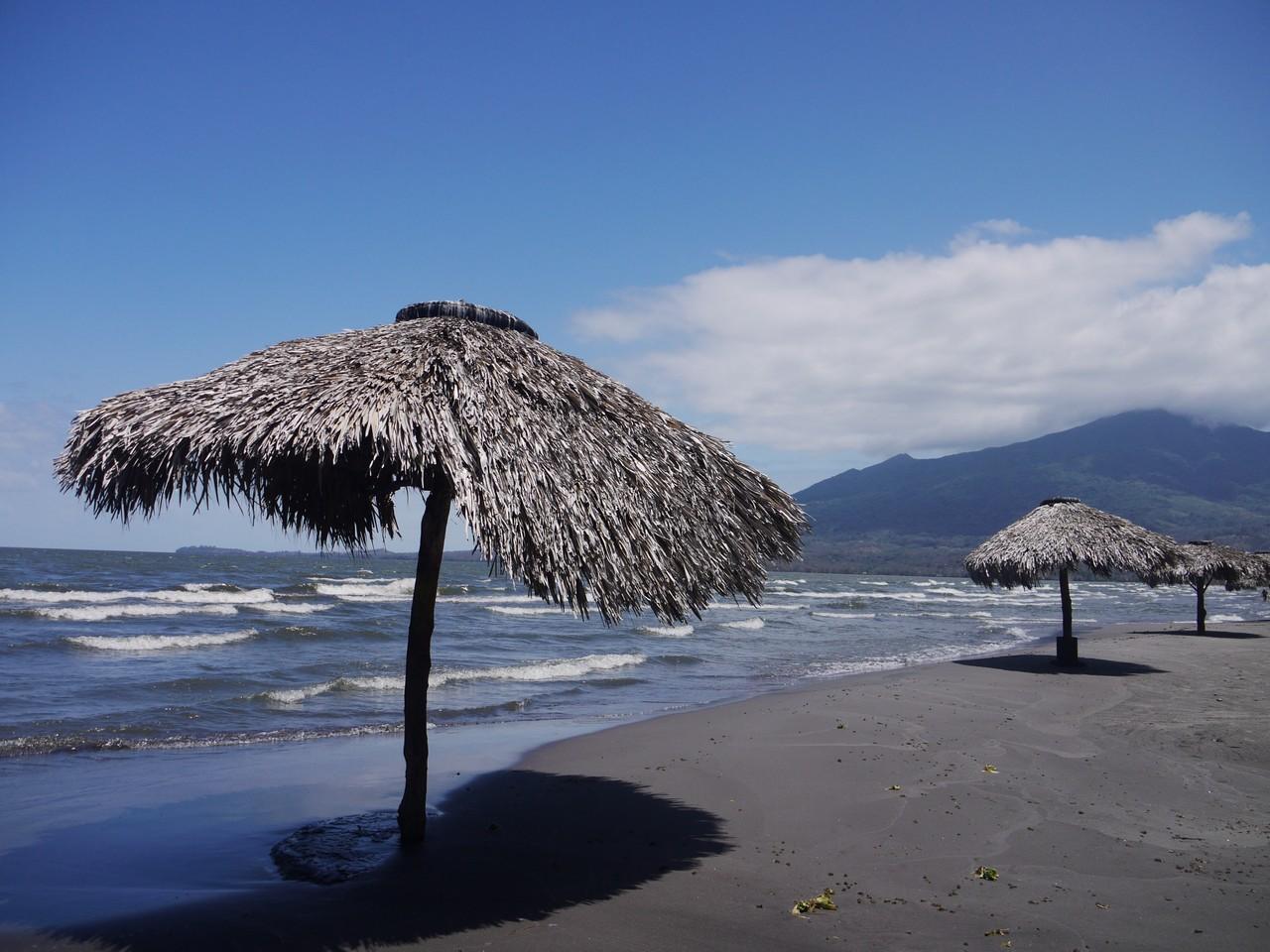 Playa Santo Domingo, Isla de Ometepe
Playa Santo Domingo, Isla de Ometepe
What: Ometepe’s main sandy beach. Can be crowded on weekends, otherwise deserted.
Beach: soft, clean black sand.
Water: same as Granada but without the sewage.
Views: not one but two volcanoes rising just beyond the beach.
Access: bus service on Ometepe is infrequent and a bit erratic. Time the trip just right, or get a bike or motorbike, or splurge on a taxi, or hitchhike.
Amenities: pretty good fish at pretty good prices.
Santa Cruz, Isla de Ometepe
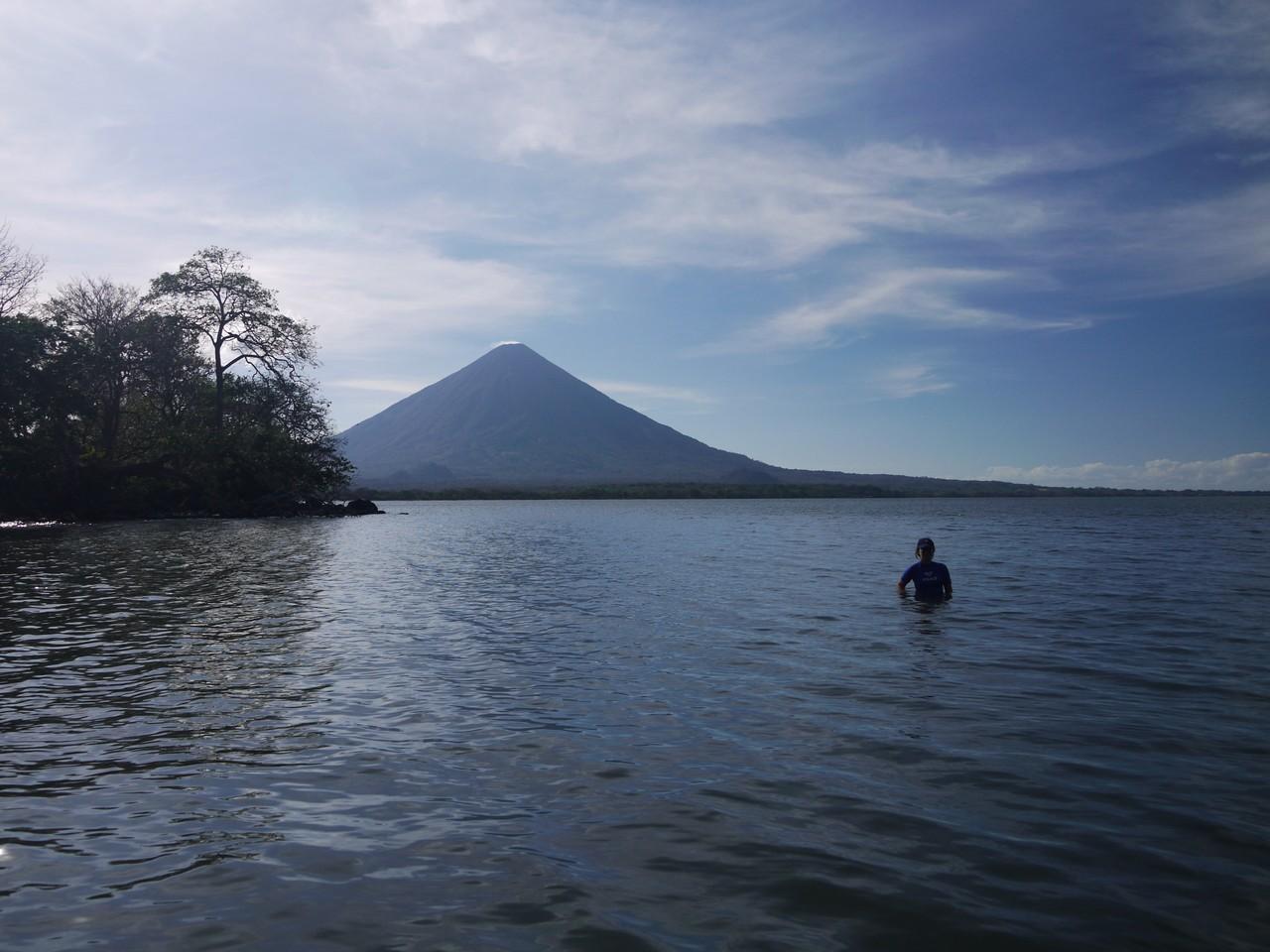 Volcan Concepción from Santa Cruz, Isla de Ometepe
Volcan Concepción from Santa Cruz, Isla de Ometepe
What: an out-of-the way place even by Ometepe standards, but with a few places to stay.
Beach: rocks and tree branches. There’s rumored to be sand nearby, but we didn’t go looking.
Water: same as in Santo Domingo.
Views: wide-open views of volcan Concepción.
Access: we had to cross a barbed-wire fence.
Amenities: mosquitoes, spiders, perhaps a snake or two if you’re lucky.
Playa Maderas and Playa Majagual, near San Juan del Sur
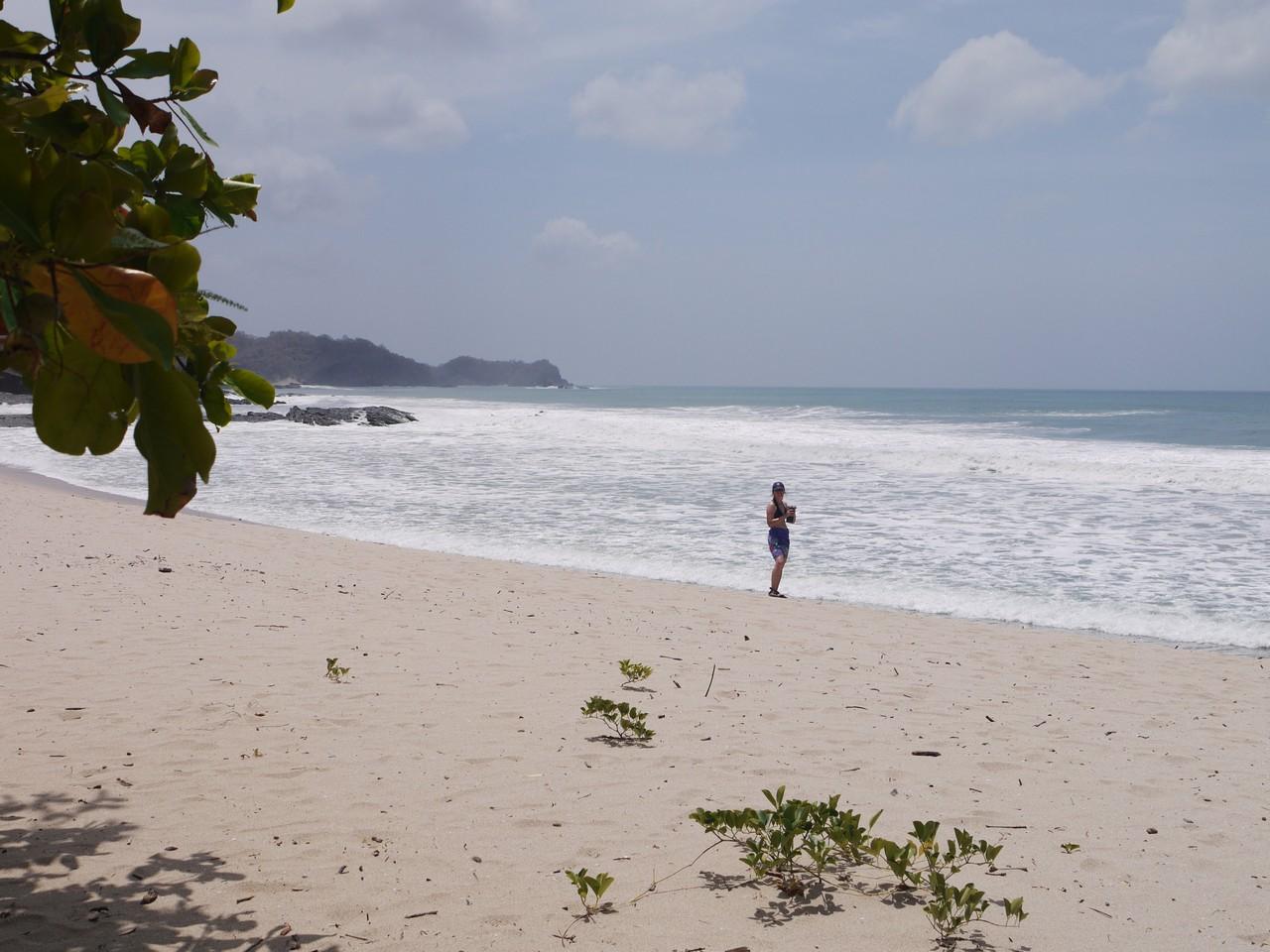 Playa Majagual
Playa Majagual
What: popular hangouts for surfers and other lazy bums.
Beach: sparkling clean white sand.
Water: could be a bit warmer, but much better than trying to swim the pacific in Canada.
Views: sand and waves and surfer chicks.
Access: 30-minute drive from San Juan, shuttles available.
Amenities: board rentals, burgers, nachos, cold beer.
Town beach, San Juan del Sur
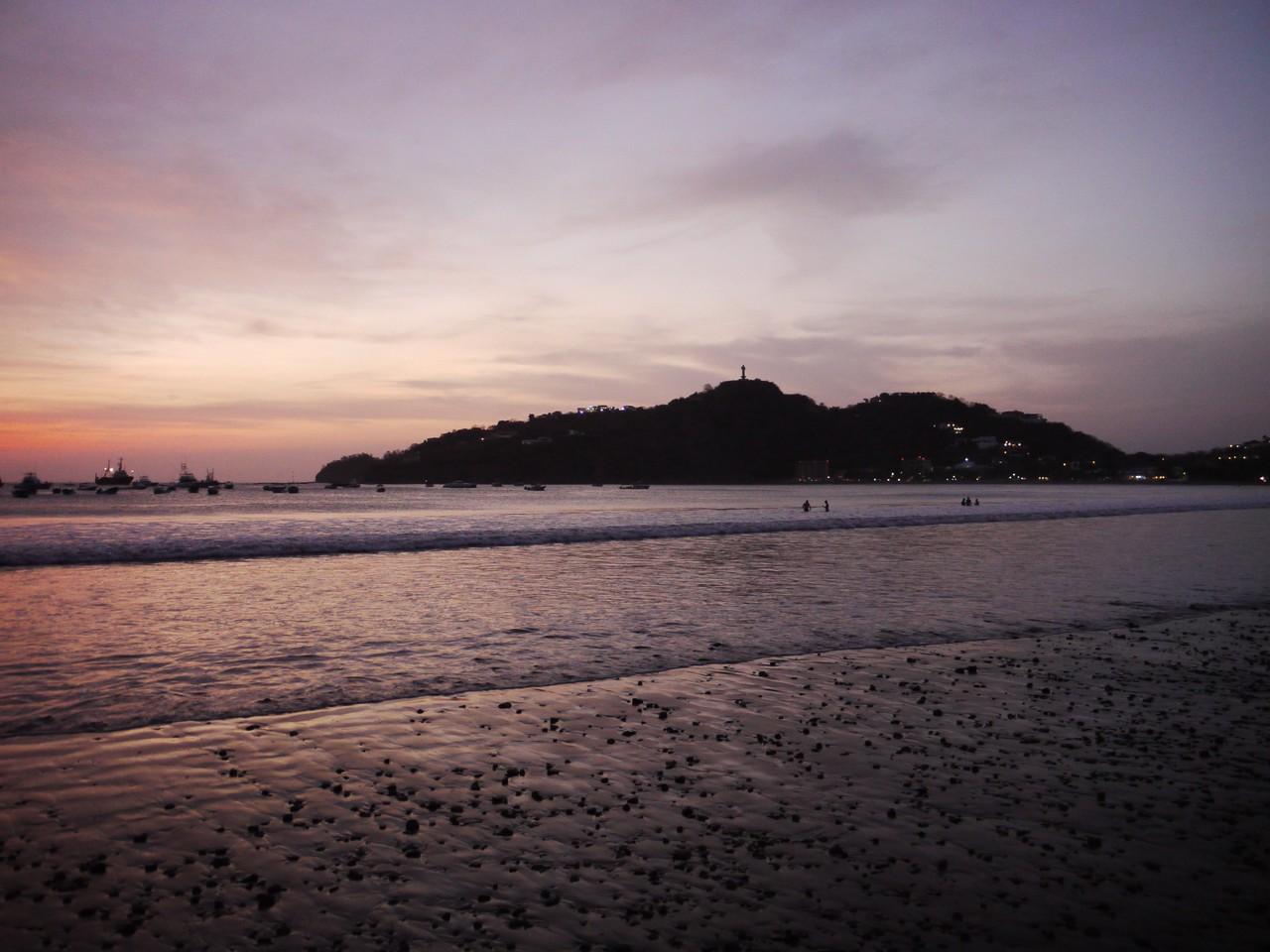 San Juan del Sur
San Juan del Sur
What: dozens of moored boats in front, Nicaragua’s surfing capital behind, massive waves, and a 24-meter Jesus keeping watch from above (specifically, from a hilltop to the north).
Beach: wide and sandy and cleaned daily.
Water: cool and salty. Some waste from the town unfortunately.
Views: great sunsets, good people-watching, and did we mention the 24-meter Jesus?
Access: get to San Juan del Sur and just follow the crowds.
Amenities: not a hint of shade unless you bring your own. Many expensive seafood restaurants and one decent ice cream joint.
See more photos from Nicaragua.